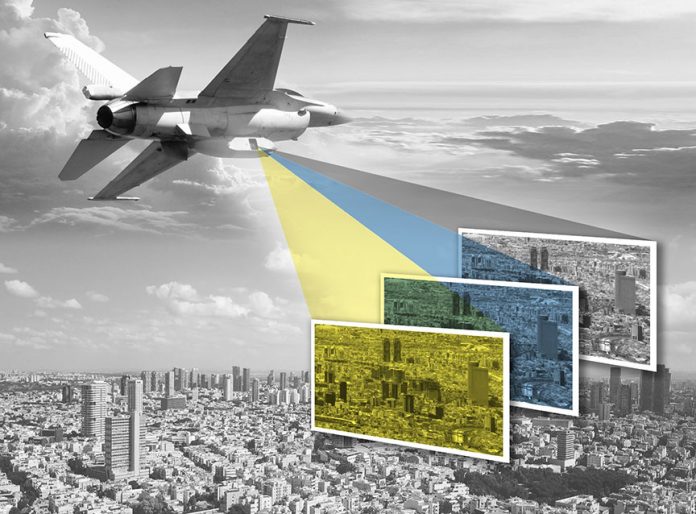
Revenues for the year ended December 31, 2020 were $4,662.6 million, as compared to $4,508.4 million in the year ended December 31, 2019.
For distribution of revenues by areas of operation and by geographic regions see the tables on page 16.
The majority of the revenues in 2020 were in the airborne systems and land systems areas of operation. The strength in the electro-optics area of operation was mainly due to the revenues of ENV, a U.S. subsidiary acquired during 2019.
On a geographic basis, the increase in North America was mainly a result of higher sales of airborne systems and revenues of ENV products. The increase in Israel was mainly a result of revenues of IMI Systems Ltd. (IMI), that was acquired at the end of 2018. The decrease in Asia-Pacific was mainly a result of lower sales of radios and airborne systems.
Cost of revenues for the year ended December 31, 2020 was $3,497.5 million (75.0% of revenues), as compared to $3,371.9 million (74.8% of revenues) in the year ended December 31, 2019. Cost of revenues in 2020 included non-cash expenses of approximately $60.0 million, related to impairment of assets and inventory write-offs due to the impact of COVID-19. Cost of revenues in 2019 included expenses of $55.0 million, related to the acquisition of ENV.
Non-GAAP gross profit for the year ended December 31, 2020 was $1,247.2 million (26.7% of revenues), as compared to $1,213.5 million (26.9% of revenues) in the year ended December 31, 2019. GAAP gross profit in 2020 was $1,165.1 million (25.0% of revenues), as compared to $1,136.5 million (25.2% of revenues) in 2019.
Research and development expenses, net for the year ended December 31, 2020 were $359.7 million (7.7% of revenues), as compared to $331.8 million (7.4% of revenues) in the year ended December 31, 2019.
Marketing and selling expenses, net for the year ended December 31, 2020 were $290.7 million (6.2% of revenues), as compared to $301.4 million (6.7% of revenues) in the year ended December 31, 2019.
General and administrative expenses, net for the year ended December 31, 2020 were $223.9 million (4.8% of revenues), as compared to $214.7 million (4.8% of revenues) in the year ended December 31, 2019.
Other operating income, net for the year ended December 31, 2020 amounted to $35.0 million, as compared to $33.0 million for the year ended December 31, 2019. Other operating income in 2020 resulted mainly from capital gains related to sale and lease back of buildings by a subsidiary in the U.S. Other operating income in 2019 was mainly a result of a capital gain related to the sale and lease back of buildings by a subsidiary in Israel.
Non-GAAP operating income for the year ended December 31, 2020 was $390.1 million (8.4% of revenues), as compared to $379.7 million (8.4% of revenues) in the year ended December 31, 2019. GAAP operating income in 2020 was $325.7 million (7.0% of revenues), as compared to $321.6 million (7.1% of revenues) in 2019.
Financial expenses, net for the year ended December 31, 2020 were $71.3 million, as compared to $69.1 million in the year ended December 31, 2019. Financial expenses, net in 2020 and 2019 included exchange rate differences of approximately $21.0 and $23.1 million, respectively, related to lease liabilities denominated in foreign currencies (mainly in New Israeli Shekels).
Other income, net was $7.4 million in 2020, as compared to other expenses of $6.2 million in 2019. Other income in 2020 was a result of revaluation and capital gain related to the sale of shares in a subsidiary in Israel, net of expenses related to non-service costs of pension plans. Other expenses in 2019 were mainly due to the non-service cost components of pension plans.
Taxes on income for the year ended December 31, 2020 were $36.4 million (effective tax rate of 13.9%), as compared to $19.4 million (effective tax rate of 7.9%) in the year ended December 31, 2019. The effective tax rate was affected by the mix of the tax rates in the various jurisdictions in which the Company’s entities generate taxable income and other income that is not part of the taxable income mainly related to non-cash items such as impairment of assets. Taxes on income in 2020 and 2019 were reduced by a tax benefit related to adjustments for prior years following a tax settlement of the Company and some of its subsidiaries in Israel with Israeli tax authorities.
Equity in net earnings (losses) of affiliated companies and partnerships for the year ended December 31, 2020 was $12.6 million, as compared $1.8 million in the year ended December 31, 2019.
Net income attributable to non-controlling interests for the year ended December 31, 2020 was $0.3 million, as compared to $0.8 million in the year ended December 31, 2019.
Non-GAAP net income attributable to the Company’s shareholders for the year ended December 31, 2020 was $318.5 million (6.8% of revenues), as compared to $297.8 million (6.6% of revenues) in the year ended December 31, 2019. GAAP net income attributable to the Company’s shareholders in the year ended December 31, 2020 was $237.7 million (5.1% of revenues), as compared to $227.9 million (5.1% of revenues) in the year ended December 31, 2019.
Non-GAAP diluted net earnings per share attributable to the Company’s shareholders for the year ended December 31, 2020 were $7.20, as compared to $6.79 for the year ended December 31, 2019. GAAP diluted net earnings per share attributable to the Company’s shareholders in the year ended December 31, 2020 were $5.38, as compared to $5.20 in the year ended December 31, 2019.
Backlog of orders for the year ended December 31, 2020 totaled $11,024 million, as compared to $10,029 million as of December 31, 2019. Approximately 65% of the current backlog is attributable to orders from outside Israel. Approximately 65% of the current backlog is scheduled to be performed during 2021 and 2022.
Net cash provided by operating activities in the year ended December 31, 2020 was $278.8 million, as compared to $53.3 million net cash used for operating activities in the year ended December 31, 2019. The lower level of operating cash flow in 2019 was mainly a result of lower collection of receipts and advances received from customers, mainly in Israel.
Impact of the COVID-19 Pandemic on the Company:
The Coronavirus disease 2019 (COVID-19) was declared a pandemic by the World Health Organization in March 2020. COVID-19 has had significant negative impacts on the worldwide economy, resulting in disruptions to supply chains and financial markets, significant travel restrictions, facility closures and shelter-in-place orders in various locations. Elbit Systems is closely monitoring the evolution of the COVID-19 pandemic and its impacts on the Company’s employees, customers and suppliers, as well as on the global economy.
As we last reported on November 24, 2020, we have been taking a number of actions to protect the safety of our employees as well as maintain business continuity and secure our supply chain. We also reported on a number of activities where we are leveraging our technological capabilities to assist hospital staffs and other first responders protecting our communities from the impact of the pandemic. All of these actions remain ongoing.
We have implemented a series of cost control measures to help limit the financial impact of the pandemic on the Company, in parallel to the measures we are taking to maintain business continuity and deliveries to our customers. We also are working on efficiency initiatives with a number of our suppliers. We continue to evaluate our operations on an ongoing basis in order to adapt to the evolving business environment.
During 2020 our defense activities, which account for most of our business, were not materially impacted by the pandemic, although some of our businesses experienced certain disruptions due to government directed safety measures, travel restrictions and supply chain delays.
The significant slow-down in commercial air traffic, and the expectation that a commercial air traffic recovery to 2019 levels will likely take a number of years, have reduced the demand for products and services for the commercial aviation markets. Additionally, manufacturers of aircraft for these markets have announced plans to reduce production rates to adapt to the lower demand.
Following a review of the economic impact on the Company’s assets overall, and those assets impacted by the commercial aviation industry in particular, the Company recorded in the third quarter of 2020 non-cash expenses related to impairment of assets and inventory write-offs, due to COVID-19, in the amount of approximately $60 million. These expenses were recorded mainly in the “Cost of Revenues” line item in the Consolidated Statement of Income and were eliminated in the non-GAAP results as a category of expenses that are not part of the Company’s recurring business.
We believe that as of December 31, 2020, Elbit Systems had a healthy balance sheet, adequate levels of cash and access to credit facilities that provide liquidity when necessary. We have given high priority to cash management and adequate cash reserves to run the business.
The extent of the impact of COVID-19 on the Company’s performance depends on future developments including the duration and spread of the pandemic, the measures adopted by governments to limit the spread of the pandemic, including the roll-out of vaccinations, and resulting actions that may be taken by our customers and our supply chain, all of which contain uncertainties. As noted in our annual report on Form 20-F, the preparation of financial reports requires us to make judgments, assumptions and estimates that affect the amounts reported. For our financial results for the year ended December 31, 2020, we considered the economic impact of the COVID-19 pandemic on our critical and significant accounting estimates. The expected impact of the COVID-19 pandemic did not have a material effect on our judgments, assumptions and estimates reflected in the results. However, our future results may differ materially from our estimates. As events continue to evolve in connection with the COVID-19 pandemic, the estimates we use in future periods may change materially.

